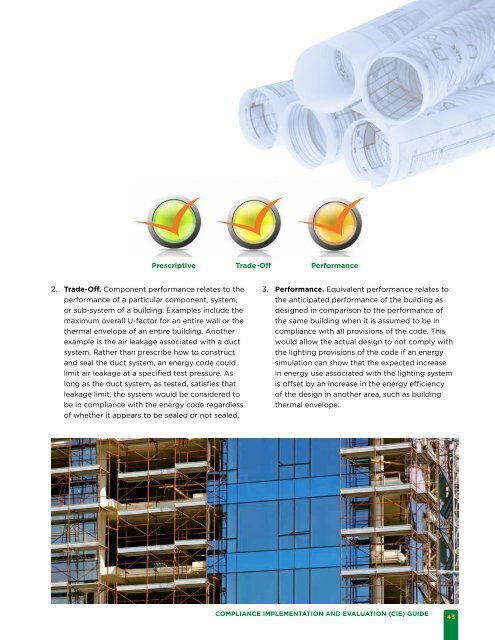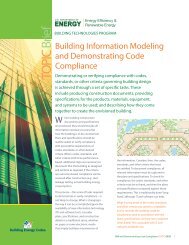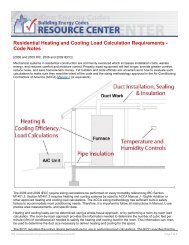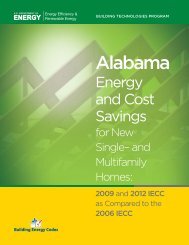(CIE) Guide - Building Energy Codes
(CIE) Guide - Building Energy Codes
(CIE) Guide - Building Energy Codes
- No tags were found...
You also want an ePaper? Increase the reach of your titles
YUMPU automatically turns print PDFs into web optimized ePapers that Google loves.
Prescriptive Trade-Off Performance2. Trade-Off. Component performance relates to theperformance of a particular component, system,or sub-system of a building. Examples include themaximum overall U-factor for an entire wall or thethermal envelope of an entire building. Anotherexample is the air leakage associated with a ductsystem. Rather than prescribe how to constructand seal the duct system, an energy code couldlimit air leakage at a specified test pressure. Aslong as the duct system, as tested, satisfies thatleakage limit, the system would be considered tobe in compliance with the energy code regardlessof whether it appears to be sealed or not sealed.3. Performance. Equivalent performance relates tothe anticipated performance of the building asdesigned in comparison to the performance ofthe same building when it is assumed to be incompliance with all provisions of the code. Thiswould allow the actual design to not comply withthe lighting provisions of the code if an energysimulation can show that the expected increasein energy use associated with the lighting systemis offset by an increase in the energy efficiencyof the design in another area, such as buildingthermal envelope.COMPLIANCE IMPLEMENTATION AND EVALUATION (<strong>CIE</strong>) GUIDE43
















